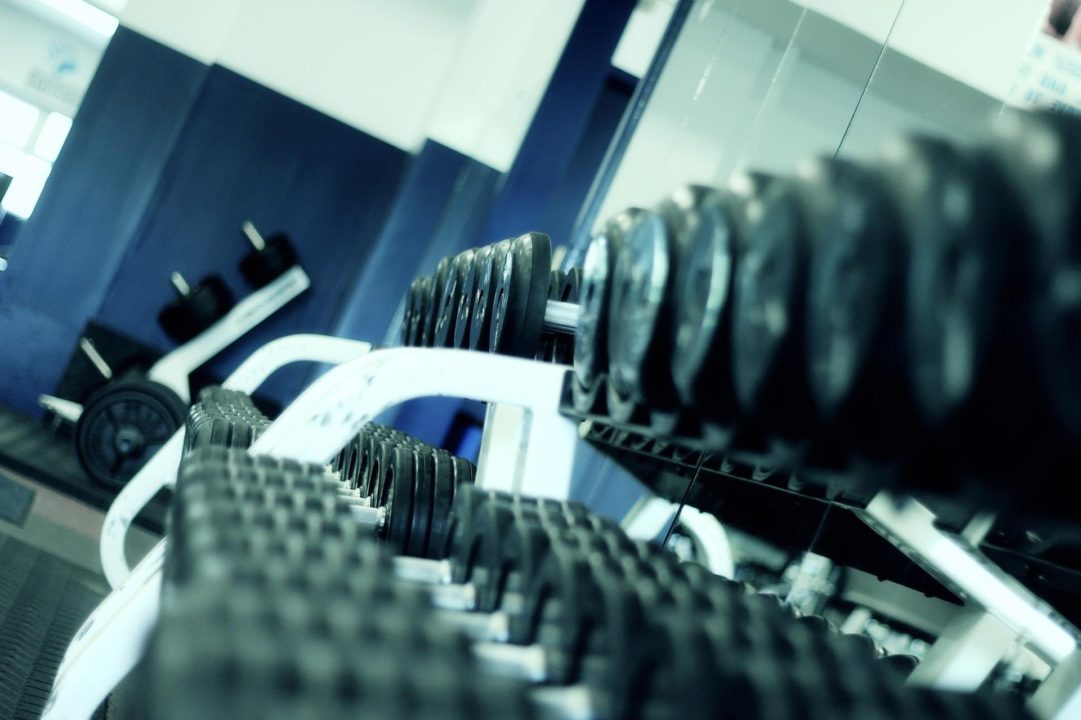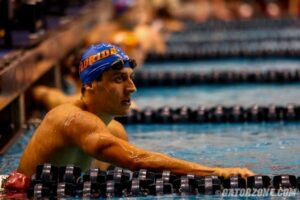Courtesy: Carlos Omana
What is the goal of dryland for swimmers? Is it to improve aerobic capacity? To improve core strength? Just more training to get “better”? Let’s take a look.
The goal of dryland training should be to improve the capabilities of the swimmer/s so they can swim faster in the pool. Too often we still see swimmers running miles before or after practices, mindless “core” work, burpees, stadiums, jump rope, bands or even…boxing, as a form of dryland. Do these methods actually make swimmers faster, or do they make them more tired?
Swimmers, whether sprinter or miler, already spend the majority of their training in the pool improving their capacity to swim their designated distance as fast as possible while limiting fatigue. Let’s dive deeper.
Let’s assume for a second that swimmers have four buckets of training that they can pour fatigue into in preparation for a race. Each bucket should not overflow at the cost of keeping another bucket less full. A full bucket would mean they have enough of this training stimulus in their program.
The four buckets would include:
- Aerobic
- Speed
- Strength
- Position
In our first bucket, aerobic, swimmers are already getting the aerobic work they need in the pool and no other form of training will be nearly as specific as pool work. Running just makes you a better runner, boxing makes you a better boxer, stadiums make you better at doing stadiums. None of these methods of training will directly or indirectly make you a better swimmer, yet, we see many programs have them as staples in their training (myself included in high school and college). Not only do they not make swimmers faster, they continue to pour more fatigue into the aerobic bucket throughout the season on top of the aerobic work in the pool, thus overflowing this bucket.
For our second bucket, speed, whether sprinter or miler, swimmers need some level of speed training. Speed is the name of the game. Whoever touches the wall first, wins. It’s no coincidence that a swimmer like Katie Ledecky, who can dominate the 400m, 800m and 1500m races can also swim the 100m and 200m races at a very high level. The most specific speed work that swimmers do is in the pool. Rarely do we see dryland methods intended to improve speed capacity.
The third bucket, strength, unfortunately still has a bad reputation because it is thought it makes you “heavy and slow”. This could not be further from the truth. If executed correctly, strength is a swimmer’s best friend. Building functional strength makes a swimmer’s body more resilient to the demands of the sport, keeps their shoulders healthy, and allows them to be more efficient in the water by improving distance per stroke. However, the majority of strength work should be limited to the weight room with the supervision of a strength coach.
The fourth bucket is the hidden gem for a swimmer’s longevity and success. Position is the ability to move the body according to the demands of the stroke, while also appropriately producing force without compensations. Let’s look at the breaststroke kick for example. The swimmer bends their knees while limiting how far forward in front of the hips the knees go. They then turn their feet out to kick back which allows their hips to rise and propel the body forward. The appropriate position would mean that the swimmer has sufficient hip rotation, ankle eversion and inversion, and enough core strength to tilt the pelvis to perform a proper kick. If a coach has a swimmer who really struggles with their breaststroke, it would be more functional to improve those capabilities in the swimmer instead of including random exercises that do not make a faster swimmer.
Here is a general sample of what a better dryland can look like:
- Foam roll/trigger point and stretching/mobilizing areas that may be “tight” (latissimus dorsi, pectorals, hip flexors, quadriceps, thoracic spine, etc)
- Stabilize those areas in their new ranges of motion by learning to produce force with those joints (rows with rotation, banded glute bridge, lateral lunges, dead bugs, etc). The movements will be specific to what the swimmer or team needs.
After this, the swimmer has addressed their needs for practice, is warm, in position, and ready for what their respective stroke demands from the body in order to be successful.
Reducing the need for many different and inefficient methods of dryland and sticking to what is important has many benefits which include:
- Less cumulative fatigue throughout the season for faster swimming more often
- Less cumulative impact on the shoulders keeping them pain-free and healthy
- Improved ability to recover from the demands of practice
- Higher and more consistent force outputs in the pool
- Possibly shorter taper needed
- Faster swimming at big meets
 ABOUT CARLOS OMANA
ABOUT CARLOS OMANA
Carlos Omana, owner of White Water Method, trained under Coach Kirk Peppas and at the University of Florida during his swimming career in addition to representing Venezuela internationally after his collegiate career. After swimming, Carlos pursued a career in strength and conditioning. He graduated with his M.S. in Human Performance and received certifications as a Certified Strength and Conditioning Specialist, USAW Level 1 Performance Coach, Performance Enhancement Specialist, and Certified Physical Preparation Specialist. In 2024, he started White Water Method which aims to help swimmers and coaches tackle physiological obstacles such as joint discomfort, technique issues, strength, power, mobility, etc. White Water Method is reinventing and improving the old school dryland training that swimmers know all too well.


I swam in college. With what I know now I wish dryland was a bit different. I like the mobility you mentioned. I would keep the core exercises, probably add to them. I would still run but I would taylor it to the swimmer. Work on fast twitch with the sprinters by doing short sprint drills. You can build aerobic capacity doing anything in zone 1 or 2, so for distance swimmers 45 minutes on an assault bike or a run if they can handle it would be super beneficial. Think about getting an extra aerobic practice in without touching the water. Listen to some tunes or an audio book and just go.
I agree with much of what’s stated in the article. I think it is important to specify that this article is more pointed towards older swimmers.
I have seen a lot of age group dryland training change to help swimmers become more well rounded physically and work on general strengthening, because so many swimmers are year round swimmers now and have deficiencies due to this.
For this reason, I am a fan of general strength and mobility training for age groupers.
For most sports it is not strength that one is after, but power (the ability to apply strength quickly).
FOLLOW @whitewatermethod for more content!
I have no illusions that anything will ever change, but here is the hill that I will die on:
- At least in the US, there is too much training on dryland, and not enough focus on flexibility. Achieving more flexibility, while improving the ability to generate more power in that position will pay way more dividends than pure strength training/dryland and
- Swimmers are usually overtrained, and this greatly affects taper cycles and peak performance. Time and time again, I see swimmers (especially in LC season) where it’s pretty obvious that taper and rest just got them back to parity where they were not exhausted. Definitely not in a place to perform their best. My proof is not only
… Read more »Alternative take on #2 – the COVID lockdowns gave people a long period of time without competitions. Swimmers are typically apprehensive to changing their technique when important meets are coming up, preferring to work on those skills in the early season. The lockdowns simulated an “early-season” period where there were no meets and they could then focus more on fixing technical skills, which is what led to the huge improvements post-COVID.
Possibly, but since so many teams could not even train for significant amounts of time, and the improvements were so broad…I’m going to stick with my theory. Especially since so many coaches are not really into technique work
I hate running in dryland and honestly have never noticed any aerobic benefit.
It just feels like I get tired and swim like shit for no reason.
There are benefits to engaging more dorsiflexion of the ankles, strengthening joints and tendons through impact, and building athletic skills that can carry them through post-swimming careers. I’m not saying run every day but there are definitely benefits there.